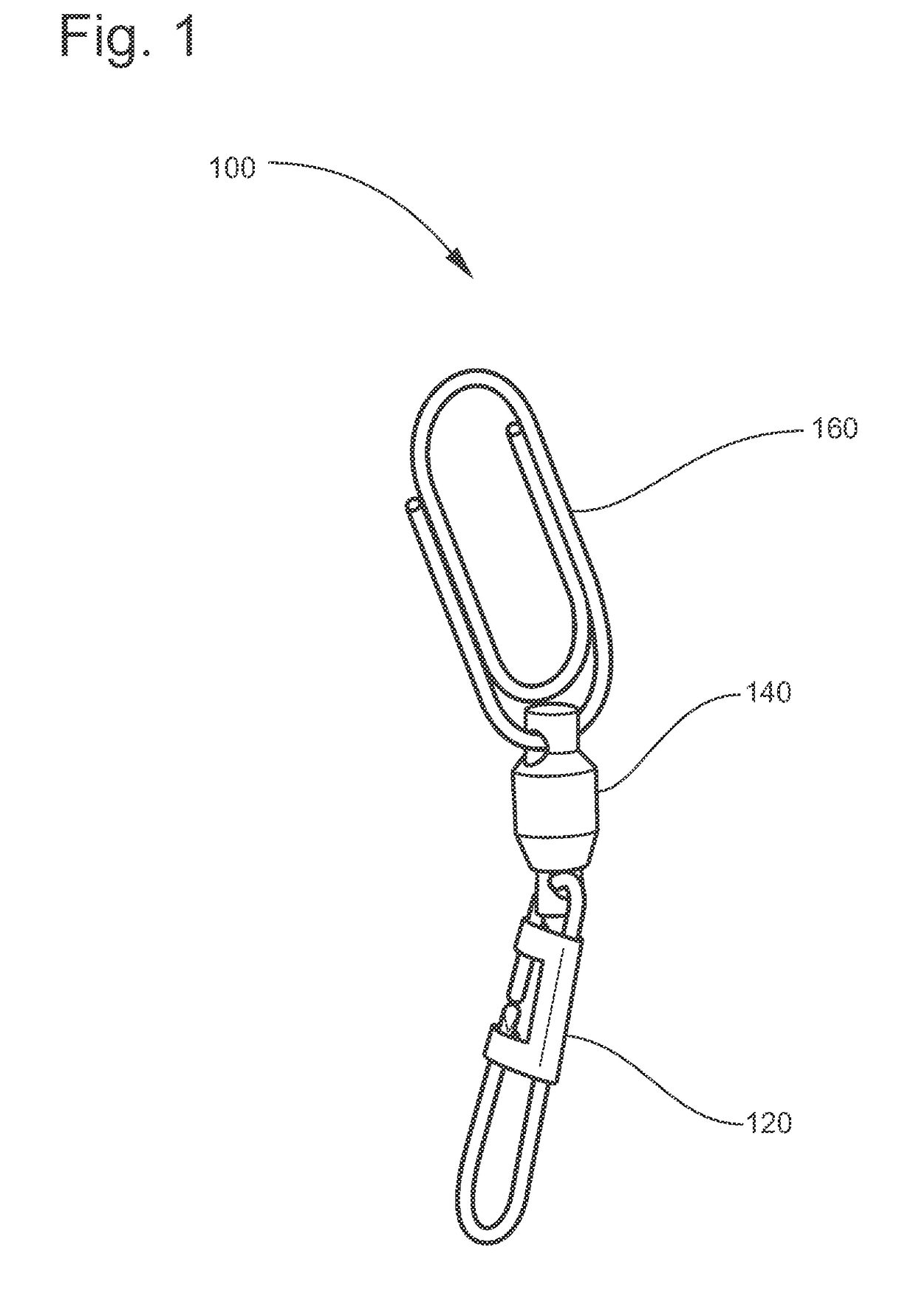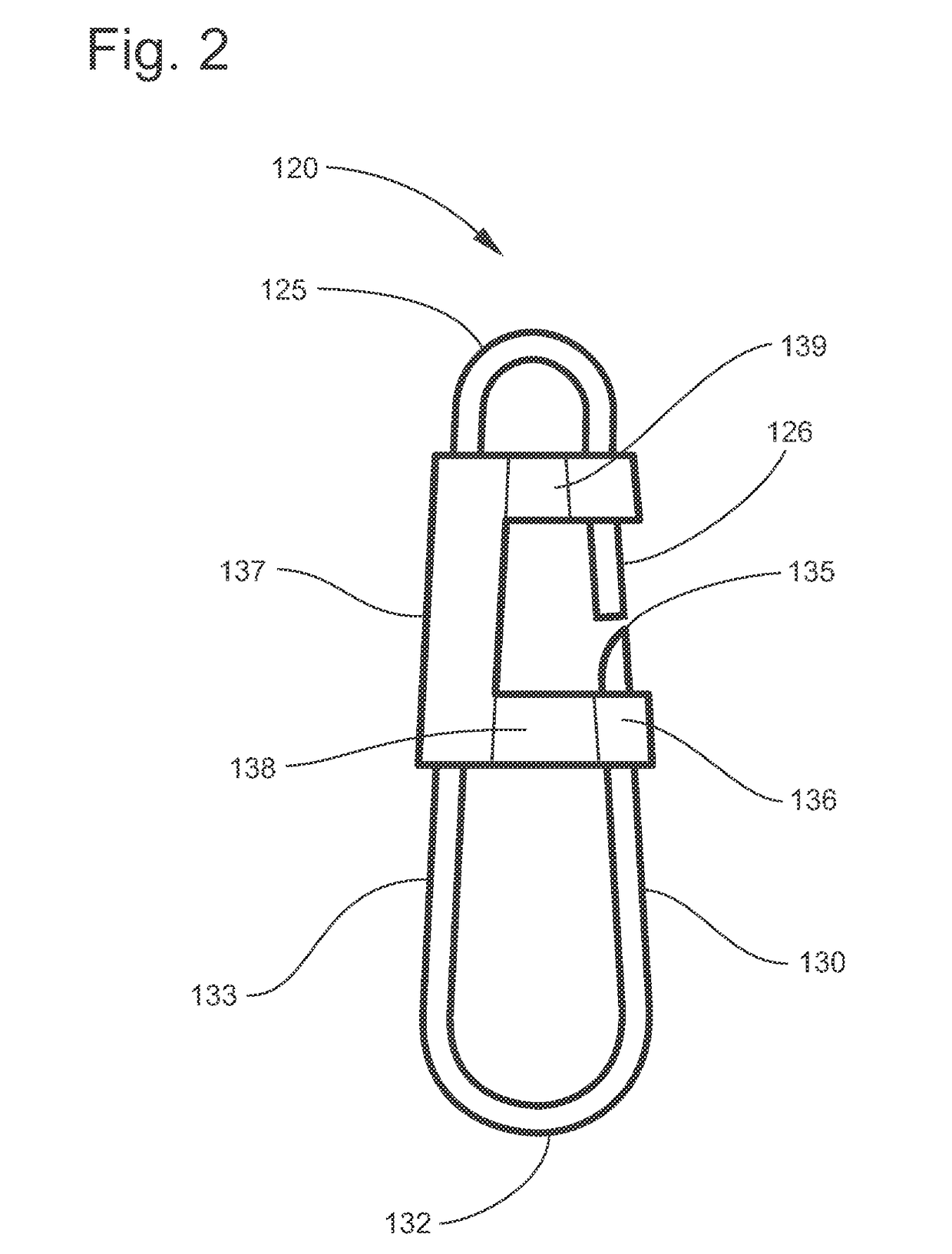Device for securing an object to a subject and wound closure
a technology for objects and objects, applied in the field of devices, can solve problems such as difficulty in reuse of sutures, open wounds, and inhibit healing
- Summary
- Abstract
- Description
- Claims
- Application Information
AI Technical Summary
Problems solved by technology
Method used
Image
Examples
examples
[0080]Using the traditional suture method to attach and secure a tie-over bandage, four suture loops were affixed to a piece of foam intended to replicate the skin of a subject. Briefly, the suture loops were placed at the four corners of a rectangular surface area roughly six inches by four inches. A roughly 4×6 gauze bandage was then aligned over the rectangular area. Cloth lacing material was then threaded through the four loops of the suture loops in crisscross pattern. The lacing material was then tightened and secured. The total time to secure the bandage to the simulated skin was 3 min and 44 seconds (i.e., 224 seconds).
[0081]The above experiment was repeated a second time, except that four prototype devices were used as described herein to replace the traditional suture loops. Briefly, four devices were placed at the four corners of a rectangular surface area roughly six inches by four inches in accordance with the methods described herein. A roughly 4×6 gauze bandage was th...
PUM
 Login to View More
Login to View More Abstract
Description
Claims
Application Information
 Login to View More
Login to View More - R&D
- Intellectual Property
- Life Sciences
- Materials
- Tech Scout
- Unparalleled Data Quality
- Higher Quality Content
- 60% Fewer Hallucinations
Browse by: Latest US Patents, China's latest patents, Technical Efficacy Thesaurus, Application Domain, Technology Topic, Popular Technical Reports.
© 2025 PatSnap. All rights reserved.Legal|Privacy policy|Modern Slavery Act Transparency Statement|Sitemap|About US| Contact US: help@patsnap.com



